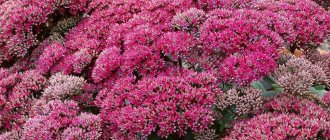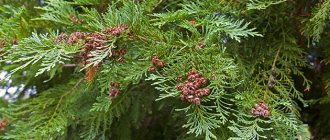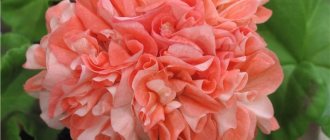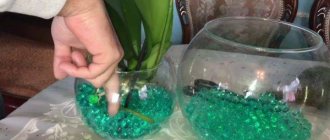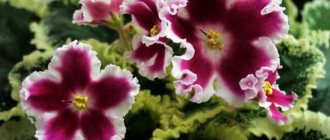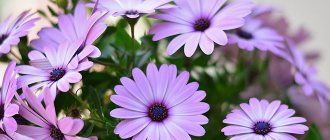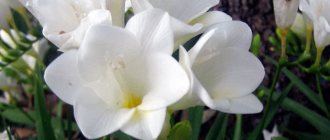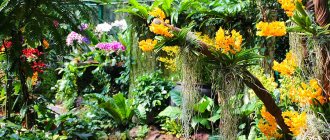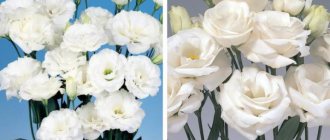Description
Gardeners call iridodictium flowers: reticulated or iridescent iris, reticulated bulb. The thing is that its name consists of two words: rainbow and mesh. There are bright spots or stripes on the leaves of the iridodictium flower. And on the top layer of the bulb you can see a mesh of scales.
Under natural conditions, the flower grows in the mountains of Turkey, Iran, and Central Asia. There are more than 10 species. All of them are very beautiful, with magnificent color and delicate aroma. These flowers are similar to both irises and crocuses, but they are so original that it is impossible to confuse them with other flowers.
So, Iridodictium is a bulbous plant. Each bulb produces a peduncle about 30 centimeters high. The flowers are large and reach a diameter of 9 centimeters. They consist of three inner and three outer sheets. A total of six leaves. They can be yellow, pink, purple, burgundy, lilac, with or without a pattern.
Origin
Central and Asia Minor are considered to be the homeland of iridodictium. Iris reticulum thrives in Turkey, Iran, and Transcaucasia. Wild forms of reticulated iris are usually yellow-flowered.
Sunny mountain slopes are a natural place of growth. The growth conditions in nature are as follows:
- In spring there is coolness, a lot of moisture that does not stagnate, but flows down from the mountains;
- In summer there is a lot of heat and heat;
- In winter there is abundant snow cover.
Looking at all the growing conditions in nature, when cultivating a plant on the estate, you should also adhere to some requirements.
Landing
Some gardeners claim that there are no difficulties in planting and caring for this plant. Planted and dug up - that’s all the work, and the flower itself will bloom in due time. In practice, things are not so simple. In order to get a flowering clearing of iridodictiums, you need to know the peculiarities of growing this plant.
- Flowers do not tolerate waterlogging and stagnation of water. This must be taken into account when choosing a landing site. A layer of gravel in the planting hole will protect the plant from stagnant moisture and provide good drainage.
- The soil should be light and fertile; when planting, add sand to the soil.
- Iridodictium does not like an acidic environment, and therefore it is necessary to choose neutral soil for planting.
- The place should be sunny and well lit, it is better if it is elevated.
- Before planting, we carefully inspect the bulbs and select healthy ones without signs of disease.
- The time for planting iridodictium is autumn. The distance between the bulbs can be from 5 centimeters to 10 centimeters. It all depends on the size of the bulb.
- The planting depth can be more than 10 centimeters. This is the peculiarity of landing. The fact is that iridodictium produces many small daughter bulbs (babies). Three plant bulbs can produce up to a hundred children. Deep planting protects, to some extent, from excessive division.
Reproduction of Iridodictium
Propagation by bulbs
One of the more popular ways to propagate iridodictium is by growing daughter bulbs. They appear at 4-5 years of age. For one adult bulb there are 2-3 daughter heads. After flowering, when the leaves turn yellow, the bulbs are dug up and stored until September. If the children are very small, then when they are transferred to the ground they are not buried too deep and are grown within 3 years.
When planting large individuals, they are placed 8 cm deep into the soil. If there are small specimens, 4 cm is enough for them. A good effect can be achieved by planting onions in groups, at a distance of up to 10 cm between them.
Propagation by seeds
They are sown in the ground in the fall, and shoots emerge in the spring. Flowering will begin after 3 years. Planting is carried out in holes 1.5-2 cm deep. The distance between rows is more than 20 cm. The gap between seedlings is about 4 cm.
When sprouts appear, the beds are weeded, weak and diseased seedlings are removed. After such treatment, the gap between the seedlings should remain at least 7-8 cm. The grown plants are planted, keeping a distance of 22-25 cm between them, and after 2-3 years of growth they are transferred to a permanent place.
A little about the species
Reticulated iris Georg (Iris reticulata Georg)
The most beautiful bulbous iris in my garden. I love it for its bright, large flowers the color of ripe plums and its delicate, barely perceptible sweetish aroma. The purple petals of the plant are decorated with bright yellow stripes and blue sparkles.
The Georg iris is only 15 centimeters tall and can grow in shade or partial shade. Flowers bloom in early April.
Reticulated iris Katharine (Iris Katharine)
Catarina netted irises look like beautiful, delicate, exquisite butterflies. These are delicate blue flowers with bright blue veins. Each petal of the iridodictium flower is decorated with yellow spots, blue stripes and specks.
All this creates a subtle, graceful pattern of amazing beauty. The flowers are large, the distance for planting is 10-20 centimeters. The planting location is sunny or partial shade.
Gordon's reticulated iris (Iris reticulata Gordon)
I would like to call these flowers of incredible beauty “flower moths.” Fragrant, blue irises will captivate you with their extraordinary tenderness.
Types and varieties of iridodictium with photos and names
Iridodictyum reticulatum
Iridodictyum reticulatum photo
It has inflorescences with a diameter of about 7 cm, colored blue and purple. Many varieties have been bred: Natasha, Claretta, Harmony, Joyce, I.S. Diyt, Cantab, Violet Beauty, Catherine Hodgin.
Dunford's Iridodictyum danfordiae
Iridodictyum danfordiae photo
It has a goblet-shaped perianth with a diameter of about 7 cm, the outer lobes are colored yellow-green, the inner ones have a double stripe of bright green color.
Iridodictyum winogradowii
Iridodictyum winogradowii photo
A very rare species. It has a perianth with a diameter of 8 cm, which is painted light yellow, the core is bright yellow, the flower is covered with spots, brown dots, the edges of the petals are corrugated.
Iridodictyum kolpakpwskianum
Iridodictyum kolpakpwskianum photo
The species is endangered. The internal lobes are located vertically and are colored pale blue. The outer lobes are widely recurved, the smoky blue color is covered with small dots and a middle stripe of white.
Iridodictium in landscape design
For a long time, the flower has been planted in flower beds and lawns. Many varieties exude a wonderful aroma, giving the iris even more charm. A special effect can be achieved if you plant crocuses, hyacinths or primrose nearby. Bright, beautiful flowers peek out from under the snow early, delighting those around them with the arrival of spring. Sometimes the plant is grown in pots.
Today the flower is an invariable attribute of alpine slides. An excellent view will be revealed to the observer if the iris is planted on the south side of the stones, and not in individual bushes, but in entire groups, reminiscent of asymmetrically shaped clearings.
Choosing a place and timing for disembarkation
All types of bulbous irises do not tolerate stagnant water. It makes no sense to grow these plants on soil with a high groundwater level and poor drainage - they will rot. Lowland is also not suitable. Ideally, the soil should be light, drained, and sufficiently nutritious. Sandy soils well fertilized with organic matter have these characteristics.
As for the degree of lighting, bulbous irises bloom best in a sunny place.
Exuberant flowering of bulbous irises can only be expected in an open, sunny place
As a rule, iridodictiums and junos are planted in the ground in early autumn - early September. The main thing is that this happens 2-3 weeks before the start of frost. Then the bulbs will have time to take root and withstand winter frosts with dignity. If rooting does not occur, the plant will die. Planting can be postponed to spring, only taking into account the fact that flowering will begin only in a year.
Xyphiums, especially the Dutch and Spanish groups, are planted in the ground in March-April, when the ground warms up to 10°C. Rooting occurs quickly and flowering occurs already in June-July.
How to care for Iridodictium?
Iridodictium grows in the same place for five years, after which the bulbs need to be renewed and transplanted to another area.
Fertilizing the bulbs should only be done in the summer, while the leaves are still green. For this, mineral fertilizer is used.
Iridodictium should be watered only when necessary, for example, in extreme heat. In spring, there is no need to water the plant, since after the snow melts the ground is sufficiently moist. In winter, the bulbs are mulched with compost.
After Iridodictium has faded, it needs to be provided with comfortable dry conditions, for example, covered with glass. If this is not possible, then the bulbs are dug up and placed in a dry, cool room. In October, these bulbs are planted in the ground to a depth of 6 cm.
Usage
Small bulbous plants are successfully grown in rock gardens and rockeries, planted on the south side of rocky hills. Iridodictiums are an excellent decoration for evergreen shrubs; they coexist well with plants that have an underdeveloped root system - Iberis, aubrieta, dwarf hosta forms, and form picturesque compositions with other primroses - primroses, crocuses and hyacinths.
The plant is used for winter forcing, using typical technological methods for small-bulbous plants.
Description
Iris danfordiae
has a narrowly ovoid, bulb, with whitish netted coats.
It has 2 leaves (per bulb), 30–45 cm (12–18 in) tall. They are linear, four-angled in cross section, and gray-green, or bluish green. The leaves sometimes appear together with the flowers, and sometimes after the flowers.
It has a slender stem, that can grow up to between 7–15 cm (3–6 in) tall. They hold 1 flower each.
It is one of the first reticulata irises to bloom, even blooming through the snow. In early spring, between January, and March.
It has fragrant (scented of honey,) flowers, in shades of yellow. From bright yellow, deep yellow, to orange. The flowers are 3–6 cm (1–2 in) in diameter.
Like other irises, it has 2 pairs of petals, 3 large (outer petals), known as the 'falls' and 3 inner, smaller petals (or ), known as the 'standards'.:17 The falls are spathulate (spoon shaped ), and spotted olive-green, or green. In the center of the falls is a deep yellow or orange crest. The standards are vert short, in some cases just bristles.
Later after flowering, it produces a seed capsule.
Biochemistry
As most irises are, having two sets of, this can be used to identify hybrids and classification of groupings.:18 It was counted in 1959 by & Mitra as 2n=27, then in 1997 by Johnson & Brandham as 2n=18 and 27 .
Diseases and pests of bulbous irises
If weather and climatic conditions are contrary to the optimal conditions for growing irises, the flowers begin to get sick and suffer from various pests
Initially, iris bushes infected with insects are very easy to identify - pay attention to the number of their leaves. A healthy plant grows from 7 to 9 leaves, while a weak iris will barely acquire 5 leaves
At the beginning of spring, the greatest danger to bulbous plants comes from the voracious caterpillars of the cutworm butterfly: they gnaw leaves and destroy flower stalks. To protect against pests, granosan is added to the ground at the base of the irises. Thrips are another enemy of bulbous plants. Insects usually accumulate in the axillary corners of leaves. To get rid of them, try spraying the foliage several times with diluted karbofos (20 - 30 g per 10 liters of water). Superphosphate, which is sprinkled on the soil in the area with irises, will help prevent slugs in wet weather.
Bacterial rot of the rhizome causes irreparable harm to the bulbous plant. If you notice the problem in time, the damaged iris can still be saved. To do this, the rotten areas are cut off with a sharp knife to healthy tissue, after which the cut is washed with a concentrated solution of potassium permanganate, and then covered with Novikov’s liquid (a mixture of brilliant green with BF-6 glue). The microorganisms that caused the development of rot die if the soil around the rhizome is cleared and the cut area is warmed in direct sunlight.
